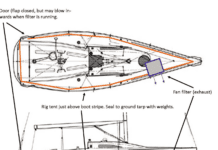Okay, I apologize. Each year at this time every periodical you see seems to feel obliged to wrap up the year in words and mostly pictures. At least youre reminded of who died. The end of a decade precipitates even larger retrospectives. God knows what the end of the millennium will bring us…Natural disasters of the last 1,000 years? Technological advances beginning with moats and catapults? And what of our beloved celebs? Are Mary Queen of Scots and Cher ranked on the same page-the 542nd and 543rd most interesting women of the millennium? Will those separated at birth be reunited on the pages of People magazine: Aldous Huxley (mescalin) and Timothy Leary (LSD)?
The Timetables of History makes for quick reference to major events and characters. Lets see how the last millennium ended. In 999, the Poles conquered Silesia and Gerbert of Aur-lillac, a mathematician and inventor, became the first French pope, Sylvester II. The second millennium opened with King Olaf I of Norway being killed in the Battle of Svolder, Leif Ericsons supposed discovery of North America and in Europe a widespread fear of the End of the World and the Last Judgment. Which just goes to show that the more things change, the more they remain the same. According to the book, in the year 1001 nothing happened.
Nowhere is there a reference to the birth of The Practical Sailor in 1975 (The article the was dropped from the title with the September 1, 1985 issue, which may coincide with a general decline in proper grammar; only the New York Times still places the article before a boats name, as in, the Viva or the Wet Dream).
I don’t have the first years issues in the archives; our collection begins with Volume 2, Number 6, July 1976. The editor (and founder) was Roger F. Duncan of East Boothbay, Maine, better known, perhaps, as co-author of the classic Cruising Guide to the New England Coast. The publication was quite different then, measuring 7-1/2″ by 10″ and running but 12 pages.
The issue begins with an account of how a cruiser shipped his boat by ship from Roadtown, Tortola, to Baltimore, Maryland for $4,700; an esoteric item titled Who Owns an Idea? that relays legal advice with respect to copying other naval architects ideas in your own custom design; a photo essay describing how to tie a bowline on a bight; homage to The Pleasures of Power Boating, with due apology to The PS readers (I agree with sailors, wrote Hartley Lord, that the noise of a power boat is unpleasant, but we make a point of not keeping under way for more than two and a half hours at a stretch.); a chilling harbinger of governmental meddling in the EPAs timetable for MSD compliance; letters to the editor including word from a reader referencing a $135 instrument that detects radar waves emanating from big ships; another attorneys comments on whether liens are recorded with documentation papers; and lastly, a book review of K. Adlard Coles seminal work, Heavy Weather Sailing.
Ten years ago, when I started at PS, there were still fewer head-to-head gear tests and comparisons than we do today, but still many fine investigative pieces, including one in the October 15,1989 issue examining the value (or lack thereof) of sail cleaning services, a boat review of the Tartan 41, and part two of a stove test.
I have prepared no other lists for you, no 100 best of this or worst of that. When I think about the end of the millennium (which isn’t often, other than deciding not to be in the air at midnight New Years Eve!), I just remind myself that its an arbitrary point in time. Time is a continuum, and mankind certainly didnt initiate itself on the birth of Christ. The Chinese don’t use our calendar and they seem okay. So why don’t we just vow to sail some place new and not worry about Y2K and who made the list?
-Dan Spurr






































